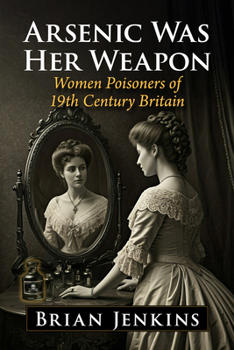Arsenic Was Her Weapon: Women Poisoners of 19th Century Britain
Female poisoners were so prolific in 19th century Britain that their form of homicide became known as a women's crime, despite there being no shortage of male poisoners. Between the bookending executions of women murderers at the beginning and end of the century, a succession of others dispatched multiple victims, most frequently by use of arsenic.
Building on previous studies of such famous figures as Madeleine Smith and Florence Maybrick, this book reveals the broader story of women poisoners through the entire century. With attention to the influence of social class on their treatment, it delves into why so many women turned to homicide in a booming industrialized society; traces the changing attitude towards women who committed capital crimes; and emphasizes the impact of the press on the enforcement of capital punishment.





